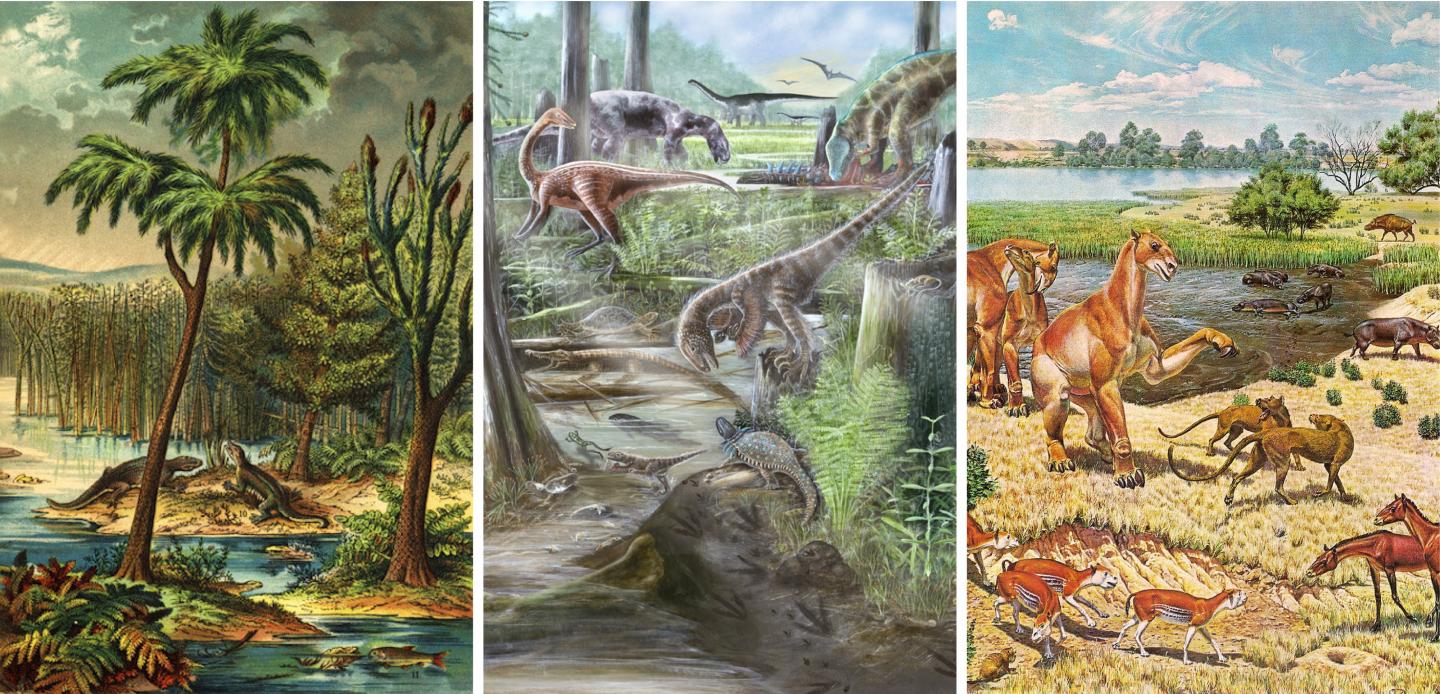Our planet is rich in different flora and fauna, with new species being discovered all the time. However, scientists believe that the rich levels of biodiversity on land are not a new trend. They believe that the biodiversity has been similar for at least 60 million years, adding that this stable state started soon after the extinction of the dinosaurs.
A group of researchers at the University of Birmingham conducted a study which involved an international team of scientists and ecological communities and shows that biodiversity on land has remained at a stable state throughout geological time. Before the study, many experts suggested that biodiversity increased steadily throughout time, suggesting that we have many more diverse species compared to the past. However, modern computer simulating techniques and approaches showed that this is not the case.
Researchers studied fossil data which originated over the past 200 years from about 30,000 fossil sites around the world. Mostly scientists focused on fossils of land vertebrates dating to the fossil remains of the earliest groups which emerged nearly 400 million years ago.
The results of their study on biodiversity on land published in Nature Ecology & Evolution show that the average number of species living in their ecological communities hasn’t increased vastly for tens of millions of years. That is justified by the interactions between species, meaning that competition for food and space limits the number of species which can live together.
“Scientists often think that species diversity has been increasing unchecked over millions of years, and that diversity is much greater today than it was in the distant past,” Lead researcher, Dr. Roger Close, said in a statement. “Our research shows that numbers of species within terrestrial communities are limited over long timescales, which contradicts the results of many experiments in modern ecological communities—now we need to understand why.”
Competition between the species which need to secure food and space have limited the evolution of new species in the same community, leading to a balance between new species coming into existence and extinction.
“Contrary to what you might expect, the largest increase in diversity within land vertebrate communities came after the mass extinction that wiped out the dinosaurs, 66 million years ago, at the end of the Cretaceous period,” Close said. “Within just a few million years, local diversity had increased to two or three times that of pre-extinction levels—driven primarily by the spectacular success of modern mammals.”
“Our work provides an example of the combined power of the fossil record and modern statistical approaches to answer major questions about the origins of modern biodiversity,” professor Richard Butler, who also participated in the research, said in the statement.





